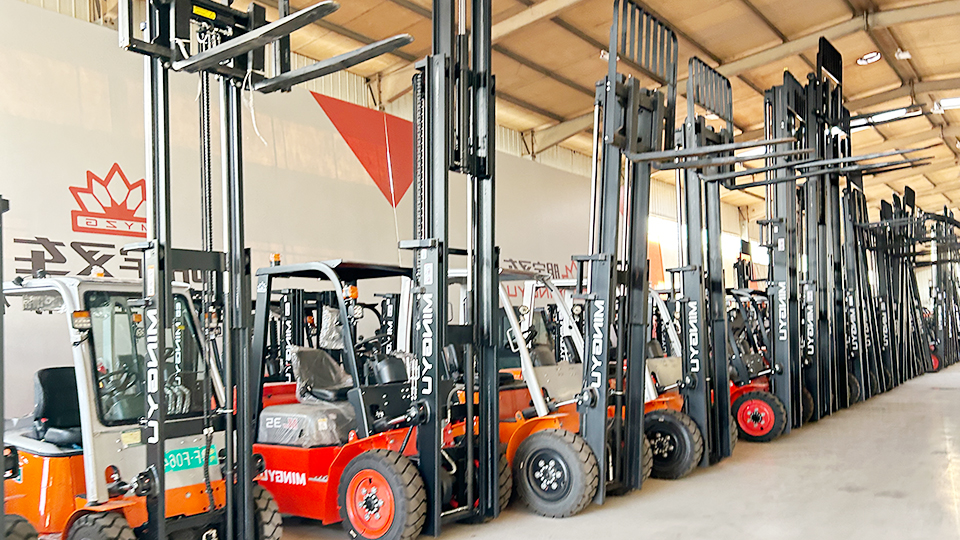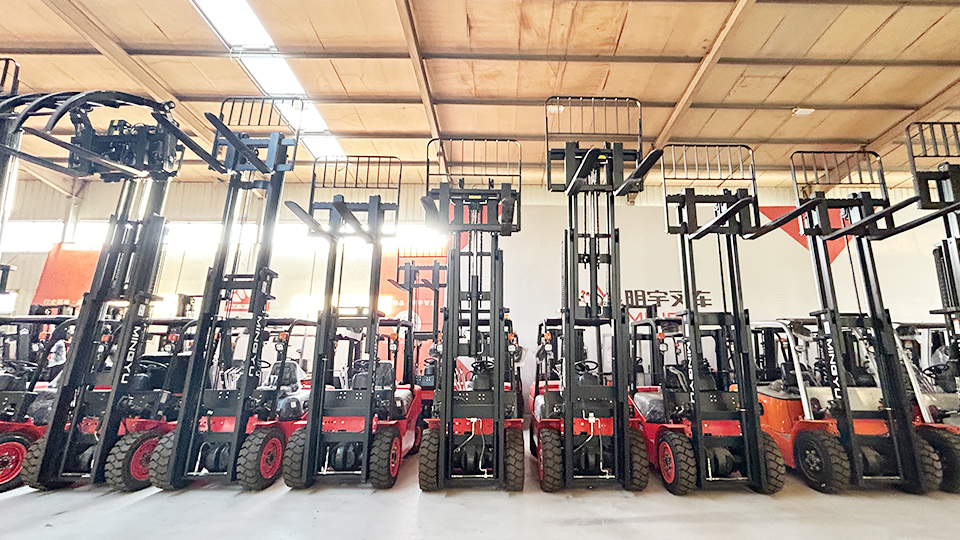
The Vertical Reach: Dissecting the Differences Between Reach Trucks and Forklifts
In the bustling ballet of warehouse operations, where efficiency and spatial optimization reign supreme, the choice of material handling equipment is paramount. Among the most ubiquitous workhorses are forklifts and reach trucks. While both serve the fundamental purpose of lifting and transporting materials, their design philosophies, operational characteristics, and ideal applications diverge significantly. Understanding these distinctions is crucial for businesses seeking to maximize productivity, ensure safety, and make informed investment decisions. This article delves into the intricate differences between reach trucks and forklifts, exploring their mechanics, capabilities, limitations, and the specific environments where each excels.
The Foundational Difference: Design and Stability
The most fundamental difference between a reach truck and a traditional counterbalance forklift lies in their design and how they achieve stability.
Counterbalance Forklifts: The Principle of Opposition
Counterbalance forklifts, the more conventional of the two, operate on the principle of leverage. They feature forks extending from the front of the machine, and their stability is achieved by a heavy counterweight positioned at the rear. This counterweight balances the load being lifted, preventing the forklift from tipping forward.
Design: Characterized by a robust chassis, a mast extending upwards for lifting, and the prominent rear counterweight. The operator typically sits within the main body of the truck, directly behind the mast.
Stability: Achieved through the physical weight opposing the load. This design allows for handling a wide range of load types and sizes without requiring outriggers or stabilizing legs.
Maneuverability: While versatile, the long wheelbase necessitated by the counterweight contributes to a larger turning radius compared to reach trucks. This can be a limitation in confined spaces.
Visibility: Generally offers good forward visibility due to the open mast design and the operator's forward-facing position. However, rear visibility can be partially obstructed by the counterweight.
Reach Trucks: Embracing the Outrigger and Pantograph
Reach trucks, in contrast, are specifically designed for narrow aisle operations and high-level stacking. Their defining features are their stabilizing legs (outriggers) and a mechanism that allows the mast and forks to "reach" beyond the outriggers.
Design: Feature a more compact chassis with two stabilizing legs extending forward, straddling the load. The operator typically stands or sits in a sideways orientation, offering excellent visibility of the load and the racking. The mast can move forward (reach) using either a pantograph mechanism (an extending scissor-like arm) or a telescopic mast.
Stability: Achieved through the wide base created by the outriggers, distributing the load weight across a larger footprint. The reach mechanism allows the truck's center of gravity to remain within the support base, even when the load is extended.

Maneuverability: Their compact design and the absence of a large rear counterweight result in a significantly smaller turning radius, making them ideal for navigating narrow aisles.
Visibility: The sideways operating position provides excellent visibility of the forks and the load during stacking and retrieval operations.
Operational Differences: Navigating the Warehouse Landscape
The distinct designs of reach trucks and forklifts translate into significant differences in their operational characteristics and suitability for various tasks.
Space Utilization:
Reach Trucks: Excel in maximizing warehouse space utilization. Their narrow aisle capability allows for higher density storage, increasing the number of pallet positions within a given area. Aisle widths for reach trucks can be significantly narrower than those required for counterbalance forklifts.
Forklifts: Require wider aisles to maneuver effectively due to their larger turning radius. While they can operate in various warehouse layouts, they are less efficient in high-density storage environments.
Lifting Capabilities:
Reach Trucks: Typically designed for high lifting heights, often reaching upwards of 30 feet or more. This makes them ideal for accessing upper levels of racking systems. Their load capacity, however, is generally lower than that of comparable counterbalance forklifts, especially at higher lift heights. The reach mechanism can also reduce the effective load capacity.
Forklifts: Offer a wider range of lifting capacities, from smaller models handling a few thousand pounds to heavy-duty machines capable of lifting tens of thousands of pounds. Their lifting height capabilities vary depending on the mast configuration but are generally lower than specialized high-reach trucks.
Maneuverability and Speed:
Reach Trucks: Highly maneuverable in tight spaces due to their compact size and smaller turning radius. Their travel speeds are often comparable to or slightly lower than counterbalance forklifts. However, their primary advantage lies in their ability to navigate narrow aisles efficiently.
Forklifts: Offer greater travel speeds over longer distances, making them suitable for transporting loads across the warehouse floor or even outdoors (depending on the tire type). Their larger turning radius can be a bottleneck in congested areas.
Operator Comfort and Ergonomics:
Reach Trucks: Often feature stand-on or lean-in operating positions, which can offer good visibility but may be less comfortable for long shifts compared to seated forklifts. Ergonomic features such as adjustable controls and cushioned platforms are increasingly common.
Forklifts: Typically offer seated operating positions, providing greater comfort and stability for the operator, especially during extended periods of use. Many models include adjustable seats, steering columns, and other ergonomic features.

Maintenance:
Reach Trucks: Generally have more complex hydraulic and mechanical systems due to the reach mechanism and outriggers, potentially leading to more intricate maintenance requirements. However, their electric power source often results in lower emissions and reduced noise.
Forklifts: Can be powered by electric, propane (LPG), diesel, or gasoline. Internal combustion engine models require more frequent maintenance related to oil changes, filter replacements, and exhaust systems. Electric forklifts have fewer moving parts and lower operating costs but require battery charging infrastructure.
Cost Considerations:
Reach Trucks: The initial purchase price of a reach truck can be higher than a comparable capacity counterbalance forklift due to their more specialized design and features. However, their space-saving capabilities can lead to significant long-term cost savings through increased storage capacity and reduced operational footprint. Electric reach trucks also have lower fuel costs.
Forklifts: Generally have a lower initial purchase price for comparable lifting capacities. However, fuel costs for internal combustion engine models can be substantial, and the need for wider aisles can impact storage density and overall warehouse efficiency.
The Application Landscape: Where Each Machine Thrives
The distinct characteristics of reach trucks and forklifts make them better suited for specific applications within material handling.
Reach Trucks Excel In:
High-Density Warehousing: Their ability to operate in narrow aisles and reach high racking levels makes them ideal for maximizing storage capacity in facilities with limited floor space.
Selective Pallet Racking: Their precise maneuverability allows for easy access to individual pallets in selective racking systems.
Cold Storage Environments: Electric-powered reach trucks produce no emissions, making them suitable for temperature-controlled environments where air quality is critical.
Order Picking at Height: Some reach truck models are specifically designed for order picking at elevated levels, enhancing efficiency in fulfilling complex orders.
Forklifts Excel In:
Loading and Unloading Trucks and Trailers: Their robust design and higher travel speeds make them efficient for moving goods to and from loading docks.
Block Stacking: Their stability and ability to handle various load types make them suitable for stacking pallets directly on the floor without racking.
Outdoor Operations: Internal combustion engine forklifts with pneumatic tires are well-suited for navigating uneven outdoor terrain.
Handling Heavy and Bulky Loads: Their higher lifting capacities make them the preferred choice for moving large and heavy items.
Applications Requiring Long Travel Distances: Their higher travel speeds allow for efficient transport of materials across larger facilities.
Hybrid Solutions and Specialized Equipment:
It's important to note that the lines between reach trucks and forklifts can sometimes blur, and specialized equipment exists to address specific needs. For instance, multi-directional reach trucks can move sideways, forward, and backward, handling long loads in narrow aisles. Articulated forklifts combine the narrow aisle capability of reach trucks with the load-handling versatility of counterbalance forklifts. Pallet jacks and stackers offer simpler and more cost-effective solutions for lower lifting heights and shorter travel distances.
Making the Right Choice: A Holistic Assessment
Selecting the appropriate material handling equipment requires a thorough assessment of several factors:
Warehouse Layout and Aisle Widths: Narrow aisles necessitate reach trucks, while wider aisles offer more flexibility for counterbalance forklifts.
Lifting Height Requirements: High racking systems demand the vertical reach capabilities of reach trucks.
Load Weight and Dimensions: Heavier and bulkier loads may require the greater capacity of counterbalance forklifts.
Travel Distances: Longer distances favor the higher travel speeds of forklifts.
Operating Environment: Indoor, outdoor, cold storage, or hazardous environments may dictate specific power sources and safety features.
Budget: Initial purchase cost, fuel/electricity consumption, and maintenance expenses should all be considered.
Operator Training and Familiarity: Ensuring operators are properly trained on the chosen equipment is crucial for safety and efficiency.
Conclusion: Tailoring Equipment to Operational Needs
In conclusion, while both reach trucks and forklifts are essential tools in modern warehousing, they are not interchangeable. Counterbalance forklifts offer versatility, power, and speed for a wide range of material handling tasks, particularly those involving heavy loads and longer travel distances. Reach trucks, on the other hand, are specifically engineered for maximizing space utilization in high-density storage environments, excelling in narrow aisle operations and high-level stacking.
Understanding the fundamental differences in their design, operational characteristics, and ideal applications is paramount for businesses seeking to optimize their warehouse operations. By carefully evaluating their specific needs and the unique capabilities of each type of equipment, companies can make informed decisions that enhance efficiency, improve safety, and ultimately contribute to a more productive and cost-effective supply chain. The choice between a reach truck and a forklift is not about which is "better," but rather about which is the right fit for the specific demands of the operation.
Name: selena
Mobile:+86-13176910558
Tel:+86-0535-2090977
Whatsapp:8613181602336
Email:vip@mingyuforklift.com
Add:Xiaqiu Town, Laizhou, Yantai City, Shandong Province, China